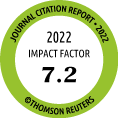|
Background:
Cedar pollinosis is
a widespread
seasonal allergy
that is unique to
Japan. Environmental
exposure units (EEU)
assist in the
development of
effective
therapeutic and
preventive measures
because outdoor
studies are limited
by seasonal
variation in pollen
exposure.
Objectives:
We constructed an
EEU to conduct a
randomized cross-over
double-blind
placebo-controlled
study of the effi
cacy of cetirizine (Zyrtec),
a second-generation
antihistamine.
Methods: The
spatial and temporal
homogeneity of
pollen distribution
in the EEU was
evaluated by
counting the number
of pollen grains on
petroleum-jellysmeared
glass slides and by
real-time pollen
monitors. In the
clinical study, 20
volunteers with
known cedar
pollinosis were
exposed to pollen
for 5 hours,
randomly allocated
to receive either
cetirizine
hydrochloride or
placebo 30 minutes
after exposure.
Symptoms and the
degree of somnolence
were recorded every
30 minutes for 5.5
hours. As a measure
of psychomotor
performance, the
UchidaKraepelin
test was used to
determine work
quantity and error
rate.
Results: The
cedar pollen grains
were scattered
evenly in the
exposure room. In
the clinical study,
symptom scores were
elevated in both
groups, showing
signifi cant symptom
induction 30 minutes
after exposure. Test
drugs were
administered 30
minutes after
exposure, and 1 hour
later patients in
the cetirizine
hydrochloride group
experienced a
significant decrease
in sneezing, nose-blowing
frequency, and nasal
congestion compared
with the placebo
group. There were no
significant
differences between
the 2 groups in
terms of subjective
somnolence or
objective
psychomotor
performance.
Conclusion:
The first EEU in
Japan was used
successfully to
evaluate cetirizine
as a treatment for
cedar pollinosis.
The results
confirmed those from
studies in other
countries, except
for the degree of
somnolence, which
increased in both
groups and may have
been related to
postprandial
sleepiness.
Key words:
Japanese cedar
pollinosis.
Cetirizine.
Environmental
exposure unit.
Second-generation
antihistamine.
|



